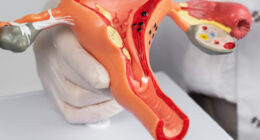Benign Prostatic Hyperplasia (BPH), also known as prostate gland enlargement, is a common condition affecting many men as they age. In this post, we’ll delve into the details of Benign Prostatic Hyperplasia (BPH), including its causes, symptoms, diagnosis, and available treatment options.
Introduction to Benign Prostatic Hyperplasia (BPH):
Benign Prostatic Hyperplasia (BPH) is a non-cancerous enlargement of the prostate gland, situated below the bladder and surrounds the urethra, the tube through which urine passes. As the prostate grows, it can squeeze the urethra, leading to various urinary symptoms.
Causes of Benign Prostatic Hyperplasia (BPH):
The exact cause of Benign Prostatic Hyperplasia (BPH) is not fully understood, but age-related hormonal changes, particularly an increase in dihydrotestosterone (DHT), are believed to play a role. Other factors such as family history, obesity, and certain medications may also contribute to the development of Benign Prostatic Hyperplasia (BPH).
Symptoms of Benign Prostatic Hyperplasia (BPH):
The symptoms of Benign Prostatic Hyperplasia (BPH) can vary in severity but often include:
1. Frequent Urination: The need to urinate more often, especially at night (nocturia).
2. Urgency: Suddenly feeling a strong urge to urinate.
3. Weak Urine Stream: Difficulty starting or maintaining a steady urine stream.
4. Incomplete Emptying: Feeling like the bladder is not empty after urination.
5. Urinary Retention: In severe cases, Benign Prostatic Hyperplasia (BPH) can lead to the inability to urinate (urinary retention).
Diagnosis and Screening:
A healthcare provider may diagnose Benign Prostatic Hyperplasia (BPH) through a combination of medical history assessment, physical examination, and tests such as:
1. Digital Rectal Exam (DRE): A physical examination to assess the size and condition of the prostate gland.
2. Prostate-Specific Antigen (PSA) Test: A blood test to measure PSA levels, which can be elevated in BPH and prostate cancer.
3. Urinalysis: Examination of a urine sample to check for signs of infection or other urinary issues.
4. Ultrasound or MRI: Imaging tests to visualize the prostate gland and assess its size and structure.

Treatment Options for Benign Prostatic Hyperplasia (BPH):
Several treatment options are available for managing Benign Prostatic Hyperplasia (BPH), depending on the severity of symptoms and individual preferences. These include:
1. Medications: Alpha-blockers, 5-alpha reductase inhibitors, and combination medications can help relax prostate muscles and shrink the gland.
2. Minimally Invasive Procedures: Techniques such as transurethral microwave therapy (TUMT), transurethral needle ablation (TUNA), and laser therapy can alleviate symptoms by reducing prostate tissue.
3. Surgical Procedures: In cases of severe Benign Prostatic Hyperplasia (BPH), surgical options like transurethral resection of the prostate (TURP) or prostatectomy may be recommended to remove excess prostate tissue.
4. Lifestyle Modifications: Lifestyle changes such as reducing caffeine and alcohol intake, managing fluid consumption, and practising pelvic floor exercises (Kegels) can also help improve urinary symptoms.
Conclusion:
Benign Prostatic Hyperplasia (BPH) is a common condition that can impact urinary function and quality of life in men. By understanding its causes, recognising symptoms early, and exploring the available treatment options, individuals with BPH can effectively manage their condition and improve their overall well-being. If you or someone you know is experiencing urinary symptoms suggestive of BPH, it’s essential to consult a healthcare professional for proper evaluation and personalised management strategies.











